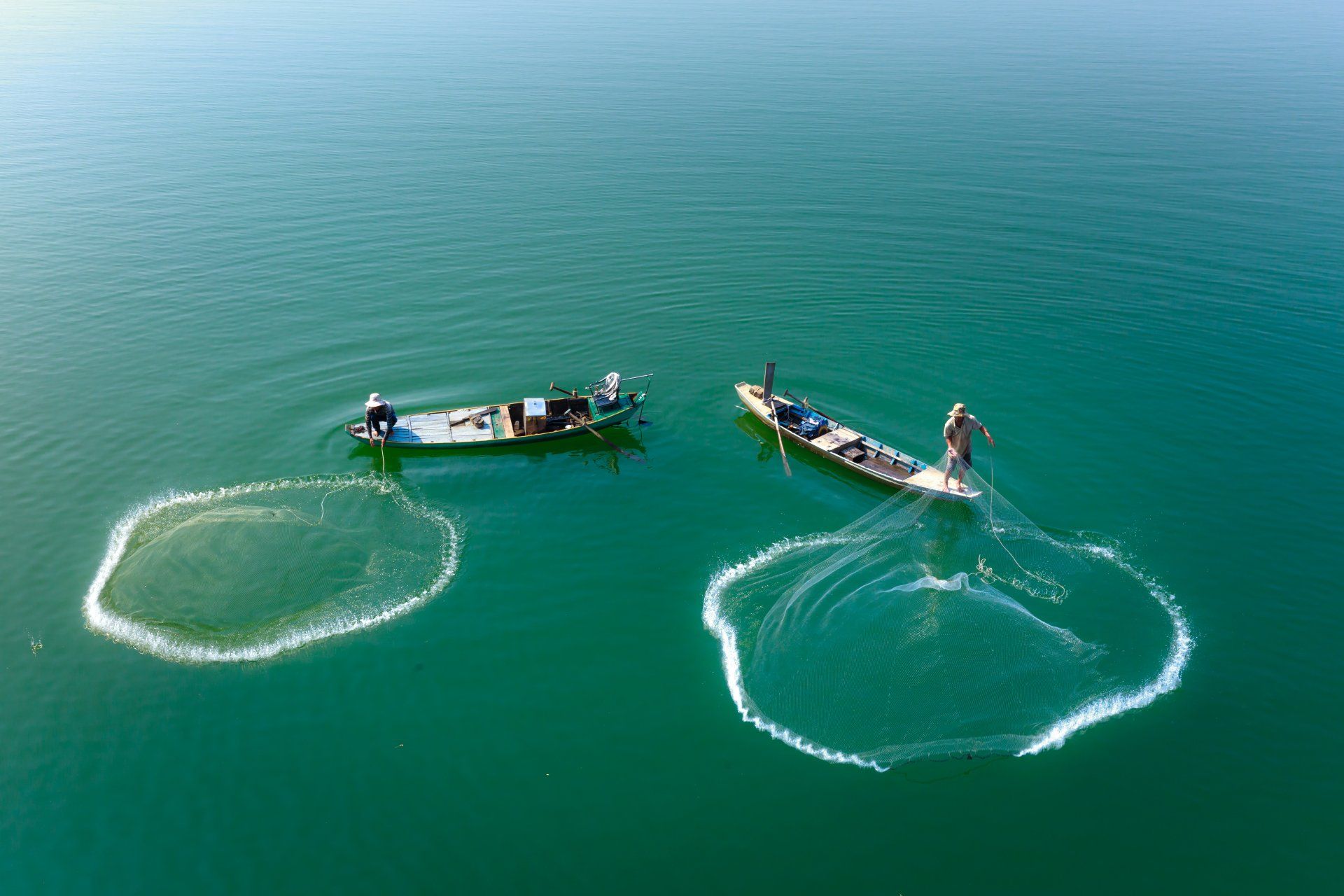2023 TOP 10 BLOG
VJEL Staff Editor: Scott Berkley
Faculty Member: Patrick Parenteau
Memphremagog’s Forever Residents: PFAS Pollutants in Vermont’s Favorite Lake
Vermont’s lakes come under threat from all sides: erosion, agricultural pollution, drought, and encroaching development all threaten the welfare of the state’s waters. The state has allocated hundreds of millions of dollars in the past decade to clean up and remediate polluted water bodies, large and small alike, and remediate the pollutants at their upland sources. Most pollutants are transitory, however: they pass through the riverine system seasonally or during flood events. With the specter of PFAS and PFOA (per- and poly-fluoroalkyl chemicals) rising nationwide, Vermont is not immune. These chemicals, which have primarily been used in non-stick and fire-retardant coatings for consumer products and building materials, are known as “forever chemicals” because they retain their composition in environmental settings indefinitely. Nowhere is the conflict over these “forever chemicals” more pronounced than in Lake Memphremagog on Vermont’s northern border.
Vermonters are justly proud of their local water bodies, and few of the state’s water resources garner quite as much enthusiasm as Lake Memphremagog. The lake is situated on the state’s northern border between the cities of Newport, VT and Stanstead, Quebec. Boaters and fishing enthusiasts come to the lake in droves to enjoy its 41 square miles of deep, cold water and largely undeveloped coastline. “Magog,” as many call it, is the outflow point for the four majors rivers of Orleans County, a 700 square-mile watershed. Though three-quarters of the water in the lake comes from the Orleans watershed on the American side of the border, three-quarters of the lake’s surface falls on the Quebec side of the border. The lake drains into the Magog River, the primary water source for most of southern Quebec and its approximately 200,000 residents.
Orleans County, along with Essex and Caledonia, make up Vermont’s Northeast Kingdom, long known as the state’s least economically developed and most rural region. Orleans and its neighbors often rank highest in unemployment and fall lowest on the population growth and local development charts. The county is also home to Vermont’s last remaining landfill: an inconvenient waste-management truth that has not been lost on many local advocates for the continued health of the down-stream Lake Memphremagog.
The 130-acre landfill parcel, owned by the waste-management behemoth Casella, sits just upstream from the city of Newport in the town of Coventry. As the only landfill in Vermont still taking in waste, the Coventry facility has an uneasy place in a state that prides itself on environmental purity, yet relies heavily on inter-state waste management system that farms out garbage from town dumps to other landfills outside of Vermont. When Casella filed an application with the state to expand the landfill more than fifty acres to its current size, five years ago, local Orleans County residents objected. Residents raised the alarm that the significant increase in dump size would be an unsightly spot, visible from miles around, and would give off a distinct odor, despite the efforts to sanitize and de-odorize the dump site. Residents would also see an increase in traffic to the Casella site as trucks offloaded waste from around Vermont and beyond.
Most concerning was the issue of contaminated landfill effluent, a problem noted by members of a local coalition billing itself as DUMP (Don’t Undermine Memphremagog’s Purity). In 2021, water tests in Quebec determined that small traces of PFAS and PFOA chemicals had begun to infiltrate the Memphremagog water source for the southern part of the province. Although the amount of the chemicals discovered would not have raised alarm bells on either side of the border, scientific data suggests that the timeline for chemicals to pass downstream from a pollutant site to a water source could be lengthy, and more contaminants may be on their way into the lake.
Though the quantity of PFAS found by Quebecois regulators was well below the standards set by the provincial government, the finding raises the question of where the chemicals originated. Other industrial sites around the lake could have spawned the contaminants, according to researchers studying the issue. The Casella dump, which includes older, unlined storage areas in addition to new, hermetically-sealed vaults for disposal, is a likely and logical culprit. EPA findings on PFAS contamination suggest that all major waste disposal sites could be polluting their local water sources, and that further testing is needed to determine exact sources.
PFAS and PFOA may be the new “forever chemicals” that Vermont regulators are learning to manage and mitigate. But Orleans County residents have dealt with prior environmental-justice issues. In 2008, researchers at the state health department announced that residents of Newport and surrounding towns were at elevated risks of asbestos contamination following the improper mitigation of an up-valley asbestos mine. Remediation of the mine is still outstanding. Asbestos, with its host of health effects for those exposed, may have been the 20th century’s major unknown contaminant; PFAS and PFOA may prove to be one of the 21st century’s major environmental contaminants.
Coventry is also home to one of Vermont’s four major wastewater management facilities (WWTFs). One function of the WWTF is to process wastewater leaching from landfill facilities such as the active Casella site in Coventry and the now-closed landfill in Randolph (visible just east of I-89 near mile 25). Comprehensive toxicity testing at the Coventry WWTF has determined that the leachate processing at the facility still releases liquids that contain up to two hundred times higher than the EPA’s recommended maximum for healthy water sources.
The only other WWTF in Vermont that accepts leachate from closed landfills is in Montpelier, the state’s capital and a community that is well versed in community efforts to challenge environmental efforts. After the state released findings of PFAS contamination in the Winooski River flowing from Montpelier down to Burlington and Lake Champlain, community members and the anti-toxicity Community Action Works group banded together to lobby the city council to stop accepting leachate-based processing contracts at the WWTF. A further legal challenge to pollutant-creating practices at the Montpelier WWTF would likely entail a series of claims under the Clean Water Act.
Citizen groups in other parts of Vermont have also begun mobilizing to challenge the established wisdom about the long-term health implications of living with contaminated water sources. In Chittenden County, a citizen’s group affiliated with the families of National Guard members stationed on the base in South Burlington has been active in testing for PFAS and PFOA in the lower Winooski River. The Burlington/Winooski urban area has a strong history of community involvement with environmental justice causes at the intersection of the military/civilian population, most recently in the fight against noise pollution resulting from F-35 fighter jets stationed at the base. Suits to block the F-35 stationing were successful in requiring the military to obtain special land-use and NEPA permitting, legal tactics that may come in handy in the fight to compel the state or federal government to remediate the Winooski as a water source.
Meanwhile, in Bennington, legal challenges to corporate PFOA pollution have recently found success. In 2019, county residents and state litigators reached a settlement that compelled a chemical-production company to provide clean drinking water to households whose well water was contaminated with a high levels of PFOA. In 2018, university researchers discovered PFOA chemicals leaching from the Chem Fab fiberglass-fabrics factory in North Bennington and entering an aquifer that fed into private wells at over 400 homes. Contamination stemming from plants and factories that produce Teflon-coated goods is a common issue in the national PFAS/PFOA dialogue. But the scope and efficacy of the remediation in Bennington is a success story, one which the residents of the Memphremagog basin could use for guidance.
The legal implications of the current Memphremagog contaminants could be multiple. Under recently-announced EPA guidance for PFAS and PFOA remediation, any party found responsible for contributing to contamination could be held responsible under the CERCLA guidelines. Depending on the scope of perfluoroalkyl contamination, the Coventry dump could qualify for future site designation under the Superfund. If the Casella-run waste management site were implicated in a federal CERCLA designation, the company could be held liable as a potentially responsible party. In a hypothetical future in which the Coventry dump were designated a Superfund site, the Memphremagog-area residents may have a legal culprit to hold to account.
Even without a CERCLA designation, however, DUMP and other community groups have other avenues to use to address lake pollution. The conversation in Montpelier between Community Action Works and the city council on issues surrounding the wastewater treatment facility demonstrates one way for community members to work with local legislatures on PFAS-related remediation. Memphremagog advocates could follow in a similar path without the need to litigate against Casella, under the Clean Water Act or otherwise, to lower the levels of PFAS and PFOA entering the watershed. Present opposition to the Casella dump in Coventry have centered on concerns around the specific site. As news spreads of the potential impacts of toxic leachate leaving the site, public opposition in the Memphremagog watershed at large, both in the U.S. and in Canada, may increase.
The Bennington Chem Fab settlement also points a way forward for Memphremagog advocacy. If research can tie the Memphremagog PFAS/PFOA contaminants to specific sources on the Vermont side of the border, the polluters could be held liable to remediate and provide the funding to sequester the “forever chemicals” currently troubling the lake’s deep waters. Chemical remediation, an expensive proposition, would thus proceed as both an item of state regulatory importance and a corporate-funded endeavor.
There is no one specific avenue to dealing with Memphremagog’s pollution problem. Continued community advocacy, opposition to dump expansion in Coventry, and further scientific research into the causes of lake pollution are all pieces of a multi-decade puzzle. Critically, as legal means of holding polluters to account become more viable, litigation against responsible parties must move forward. Small victories may happen in the courts, in the lab, at city-council meetings, or through state regulation. Those who love and depend on Lake Memphremagog hope that it will someday be reclaimed from “forever chemicals” for its seasonal and year-round residents to enjoy.











